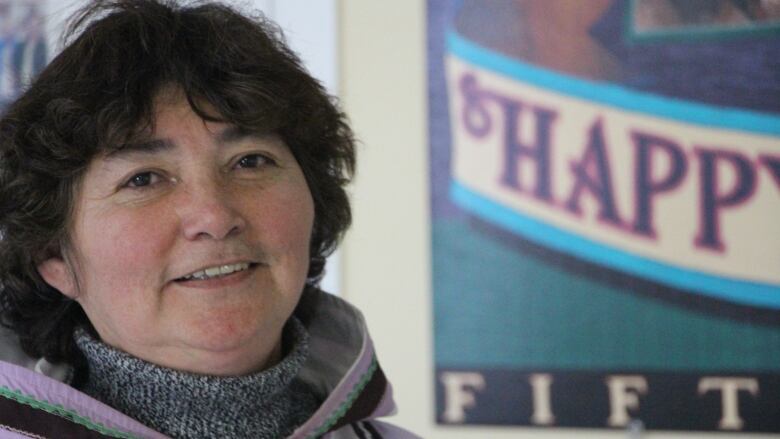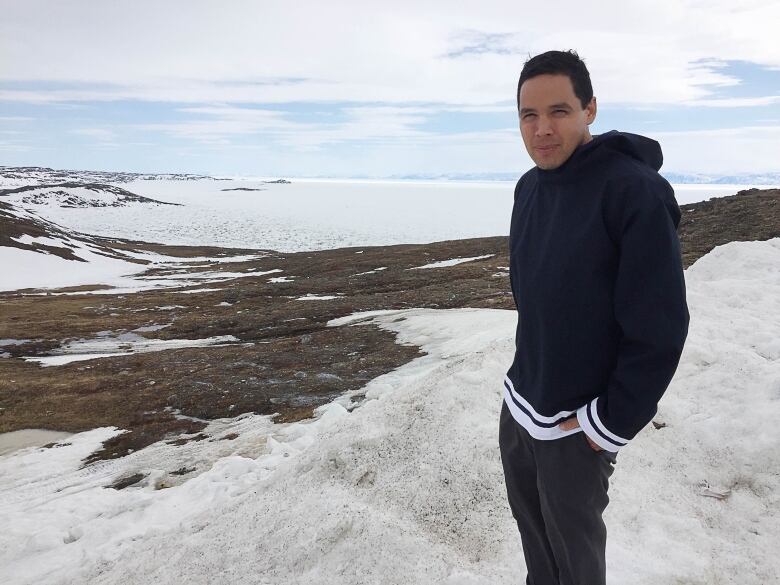Finding peace: Inuit sexual assault survivor shares story, leader pushes for change
WARNING: This story may contain troubling subject matter for some readers

Beatrice Hope was tired and anguished from trying to escape a dark pastwhen the news on TV changed her life one night in 1989.
It was a story about children innocent as she once was being abused by men they trusted. It was a story about Mount Cashel.
-
Open secret: Sexual abuse haunts children in Indigenous communities
-
Confront scourge of sexual abuse, stand up for children, Inuit leaders demand
In an instant, the past she had struggled to escape didn't seem as daunting. Hope realized she wasn't alone.
"The first time it ever came out on the news, I had flashbacks," she said."I couldn't stop thinking about it."

Hope does not talk specifics when it comes to her abuse.
As a child growing up in the smallsettlementof Kammasuk,near Voisey's Bay,her familywastight knit. They took care of each other.
After resettlingto Nain, the once strong family unit began to fall apart.
At the age of 14, she was raped.
"There was a lot of healing I had to go through. I don't want to go into detail with it all. That's all I will mention."
Abuse a common thread in Inuit life, says leader
Beatrice Hope is not alone.
A survey of Inuit people in Nunavut showed 52per cent of Inuit women and 22 per cent of men reported they suffered sexual abuse as children.
While the study does not factor in Labrador's population, a national Inuitleadersaid sexual abuse is a problem throughout Inuitsociety a culture that was traditionally centred around its children.

"This is a complete break from the historical way we have treated our children and those we love," said Natan Obed, president of Inuit Tapiriit Kanatami, which represents Canada's Inuit.
The abusers have had their own hurdles residential schools, a changing culture, loss of language. These factors can rob someone of their empathy, he said, but there are no excuses for sexual abuse.
"We're not destined to live in dysfunction," Obed said."We're not destined to live in the social conditions we find ourselves in."
'I'm alive'
Bernice Hope's road to recovery has been long and tangled since her awakening in 1989.
After years of living inside a hardened shell she created to cope with the trauma, she struggled to open up.
"As a child you can be very resilient," she said. "The things that happened to you, you just put them on the back burner. You just block it out and live the way you have to live."
She first told her family, in the presence of counsellors. Then shebegan expressing her turmoilin writing small affirmations to herself that she found helpful.

There was two years spent in a deep depression, culminating with suicidal thoughts during a camping trip with her husband.
"I couldn't do that to my family, so I just cried myself to sleep."
In the middle of the night, an invisible presence came over her. She felt warmth, happiness and peace. At the depths of her depression, she felt she could be OK again.
On Jan. 23, 2003 her birthday Hope had another mid-night experience on a hunting trip. Again, it was as if an invisible presence was telling her something.
She rode a wave of emotion all the way home, where she danced in her kitchen to Celine Dion's 'I'm Alive'.
Inuit justice system a necessity
Addressing the sexual assault problemcouldrequiretraditional Inuit justice measures, Obed said.
The Inuit culture had a distinct justice system, where elders would show love and respect to the accused after an incident.People believed their actions had consequences outside the justice system like bad weather orpoor hunting seasons. Problems were dealt with in private.

Obedis careful not to disparage the current system, but said it has not worked thus far.
"The justice system and how it presents itself in our communities is still very much skewed towards a non-Inuit, Canadian model," he said.
"We are still trying to figure out ways to incorporate our traditional justice models to the existing models, that have in many cases pushed us apart as a community rather than be the foundational source for our society to function the way we know it can."
Speaking out to rise above
After finding peace within herself, Hope began sharing her story with others.
"The only reason I tell my story is so other people know there is hope."
Speaking up, while incredibly difficult,is somethingObedhopes will spread throughout the Inuit population.
"Our communities are small," he said."There are such massive repercussions for speaking out against somebody who may still live in the community, somebody who may live in your house, or somebody who may be in a position of power."
Still, Obed believes to progress as a society, Inuit children will need to grow up in the best possible environment.
"We're going to need them to be surrounded by love and just a basic respect for them. We can do more to help our children achieve what they are capable of."












_(720p).jpg)


 OFFICIAL HD MUSIC VIDEO.jpg)
.jpg)



























































































